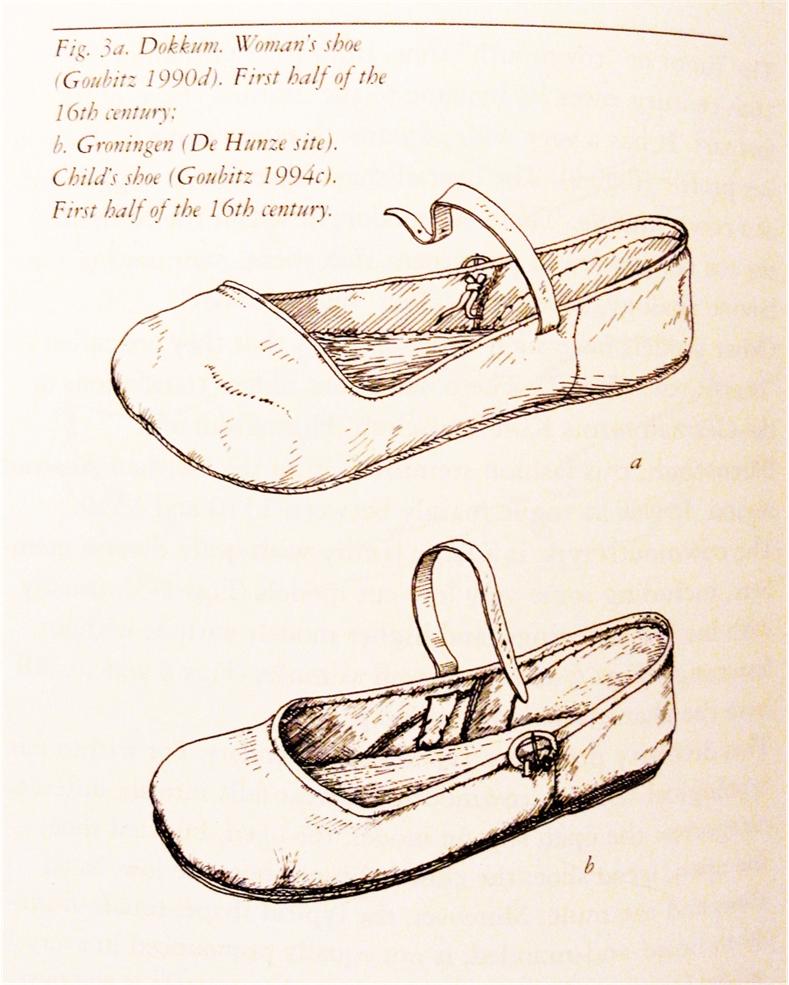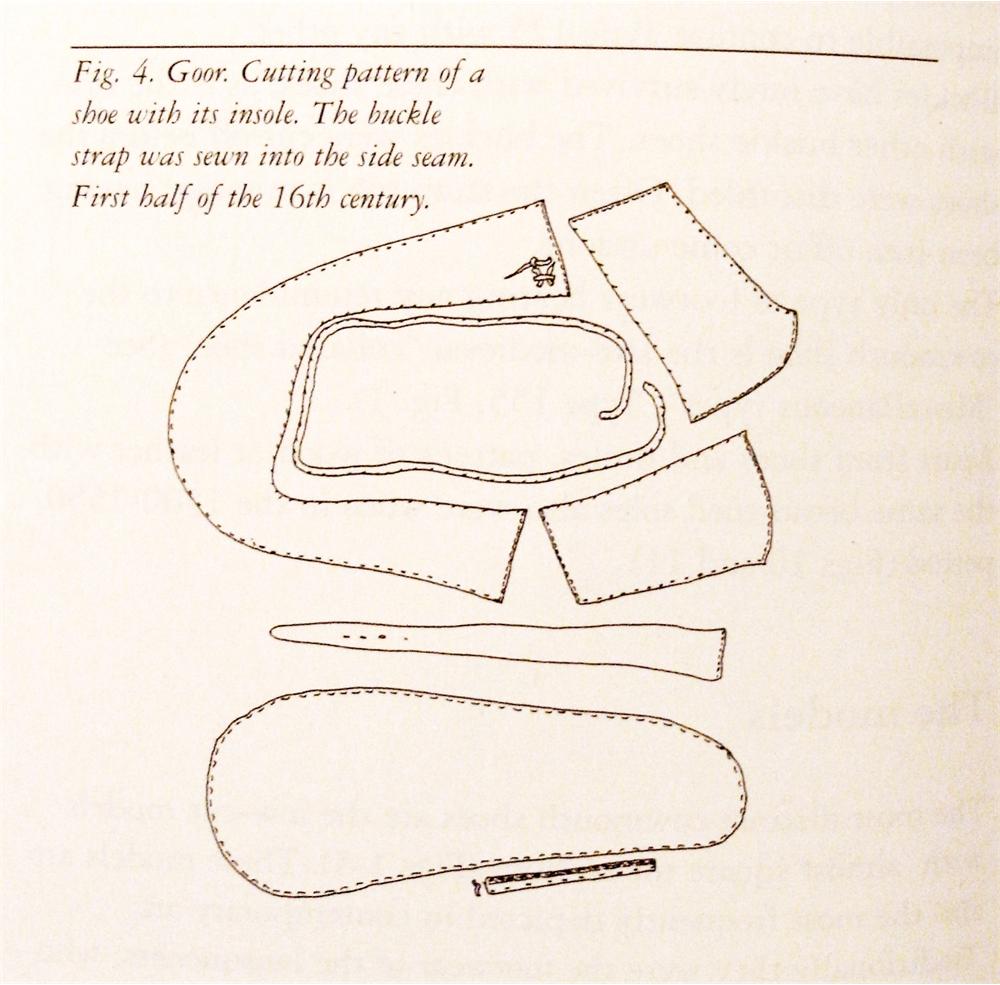What is it?
These are Kuhlmaulschuh, “cow-mouth” shoes, as seen in the attached extant shoes and period imagery, sewn out of leather with a separate wool lining / inner shoe / short over-sock.


leather shoe dating to the 1520’s-40’s

What was it used for and who used it?
This pair of shoes and inner shoes is meant to reflect those which might have been worn by a trossfrau, a follower of the landsknecht, although similar shoes were worn by both men and women throughout Germany and the rest of Europe .
What time/location?
These shoes are intended to reflect German fashion in 1535, although I also referenced the construction of a pair of English shoes of the same time frame in the V&A museum in the construction process . The idea for the inner sock is taken from an inner sock found in Regensburg .
What materials and process were used in period? What is different from the period version in materials or process?
These are leather shoes, sewn with waxed linen thread, using a turnsole technique, with an additional sole and welt added for durability, and a decorative, removable wool lining, also sewn with linen thread. The leather is vegetable tanned leather – I chose to use a fairly lightweight leather for ease of sewing and because it appears to match that of the V&A shoe. Although it won’t be as durable as other options, inventories show that middle-class families ordered as many as 10 pairs of shoes per year, per person, so comfort and ease of construction may have been more of a priority .

1. Decorative binding.
2. Outer
3. Lining
4. Welt
5. Insole
6. Outer Sole
Diagram from (figure 12)
In general, these followed period practices in construction although I did not use a last in sewing them together, which a period cobbler probably would have . Turnsoles were still in common use in the early 15th century, especially in lower-class versions – welts were just beginning to be added with outer soles . This particular pair of shoes was assembled based on the above diagram of shoes found in a cache in Kempten, German, from around 1500 .


Extant Kuhlmaulschuh pattern from Stepping Through Time.
The biggest difference in construction from period practice is that I used a duct-tape pattern rather than constructing a last and draping the leather directly into the shape of the shoe – I used duct tape and a sock to duplicate the shape of my foot, then added seam lines based on extant shoes / socks . As carving a last was outside the scope of this project, this was an acceptable substitution.
I do not own Stepping Through Time but I referenced a pattern found on Francis Chasse’s website from the book in determining the seam placement for the shoes, as well as the extant shoe from the V&A.

Shoe in Progress…
More pictures to come.
What would I do differently in a future version?
Future shoe experiments include making lasts so that I can make a heavier leather version of these, fully welted rather than turned. I also need to acquire a copy of Stepping Through Time so I can reference patterns directly.